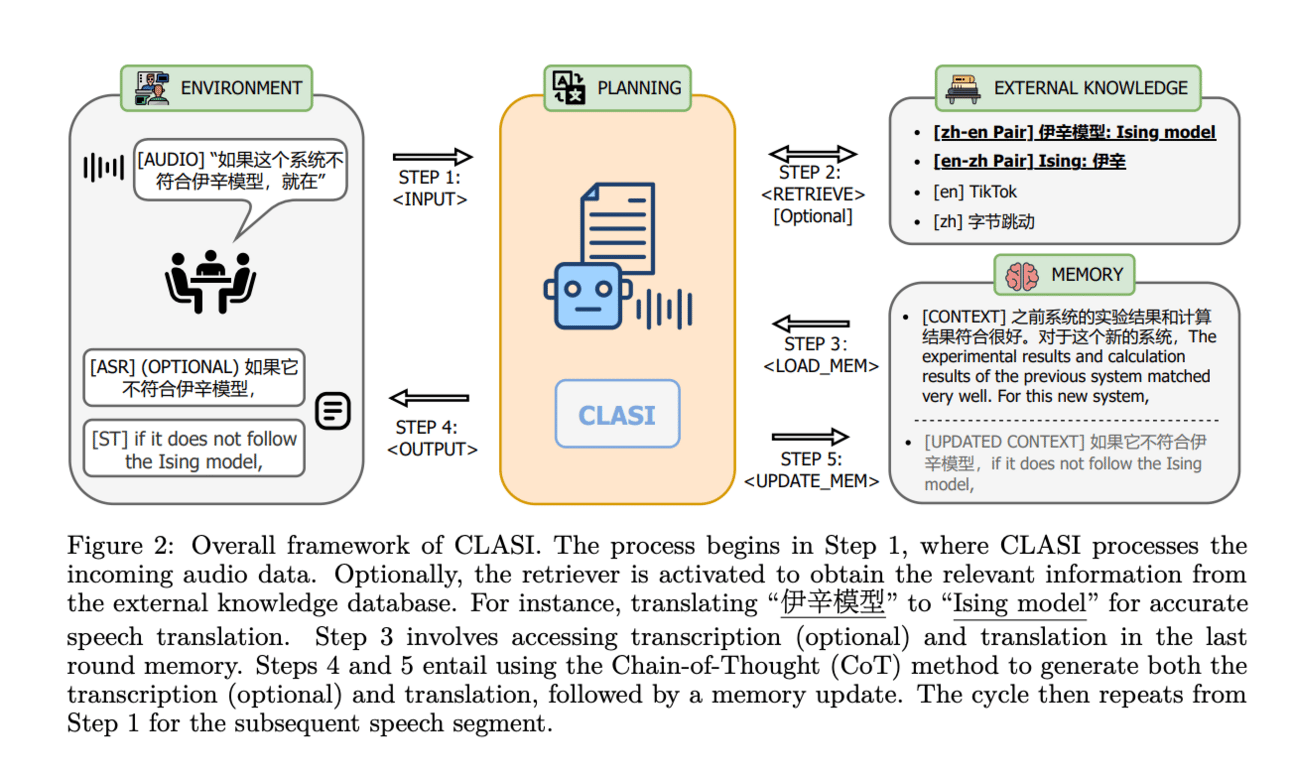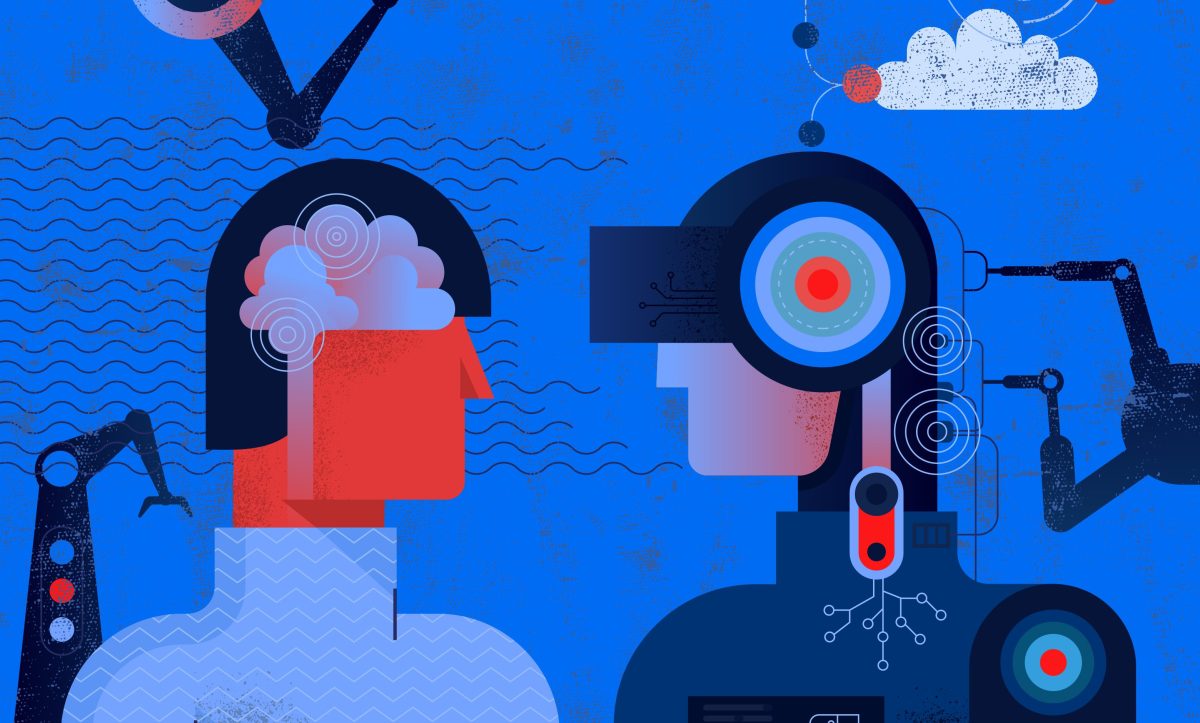- AIdeations
- Posts
- Generative AI's Impact on ICT Jobs, Elephants' Unique Calls, and Taco Bell’s AI Drive-Thrus
Generative AI's Impact on ICT Jobs, Elephants' Unique Calls, and Taco Bell’s AI Drive-Thrus
Discover the transformative impact of AI on ICT jobs, the revelation of elephants using name-like calls, and Taco Bell's move towards AI-powered drive-thrus.


Top Stories:
Generative AI Set to Transform 92% of ICT Jobs, Reveals Groundbreaking Report by Tech Giants
Elephants Have Names: The Wild Revelation from the Savannah
Taco Bell’s AI Revolution: Hundreds of Drive-Thrus Going Fully Automated
The U.S. Department of Commerce Backs Open-Source AI: Here’s What You Need to Know
News from the Front Lines:
A.I. Music Startup Suno Fires Back at Record Labels, Admits Training on Copyrighted Music.
AI startups ramp up federal lobbying efforts.
“AI toothbrushes” are coming for your teeth—and your data.
Copyright Office tells Congress: 'Urgent need' to outlaw AI-powered impersonation.
Tutorial of the Day:
Create Animated Videos For Free
Research of the Day:
Towards Achieving Human Parity on End-to-end Simultaneous Speech Translation via LLM Agent
Video of the Day:
AI Stole My Job, and That's Great News for Our Future | Jacob Rangel | TEDxFolsom
Tools of the Day:
PortfolioPilot, CoachVox, Sweetspot, Outlit, Scade, Colocio
Prompt of the Day:
Create A Social Media Strategy
Tweet of the Day:
Min Choi: "It's only been a day since OpenAI dropped ChatGPT Advanced Voice Mode. And people are already doing crazy things with it."
Generative AI Set to Transform 92% of ICT Jobs, Reveals Groundbreaking Report by Tech Giants

Here’s the lowdown on the latest shake-up in the tech world. Generative AI is about to flip the script on the Information and Communication Technology (ICT) sector, transforming a staggering 92% of jobs. Yeah, you heard that right.
Quick Byte
The new report from the AI-Enabled ICT Workforce Consortium predicts that over 92% of ICT jobs will be transformed by generative AI. This shift is coming fast, and it's going to be massive.
Key Takeaways
Massive Transformation: More than 92% of ICT jobs will see significant changes due to AI.
Seven Disrupted Job Families: Business management, cybersecurity, data science, design & UX, infrastructure, software development, and QA are the most impacted.
Skills Shift: AI-driven skills like machine learning and natural language processing are in; manual data tasks and basic programming are out.
Practical Tips for Business Owners
Invest in AI Training: To stay competitive, get your team skilled up on AI. This isn’t optional anymore.
Update Hiring Criteria: Look for talent with AI literacy and prompt engineering skills.
Leverage AI Tools: Use AI to automate routine tasks and free up your team for more strategic work.
The Bigger Picture
The report dives deep into 47 ICT roles across seven job families and ranks them by how much they’ll be transformed. Spoiler: it’s a lot. For example, in business management, 62.5% of roles are tagged for high transformation. That means AI is going to handle everything from predictive analytics to automating processes.
The most disrupted areas? Business and management, design and user experience, and testing and quality assurance. AI will take over routine tasks, streamline workflows, and even handle complex data analysis.
Skills on the Rise:
AI Ethics and Responsible AI
AI Literacy
Prompt Engineering
Large Language Model (LLM) Architecture
Agile Methodologies
Data Analytics
Machine Learning (ML)
Retrieval Augmented Generation (RAG)
TensorFlow
Natural Language Processing (NLP)
Skills Falling by the Wayside:
Basic Programming and Languages
Content Creation
Data Management
Research Information
Documentation Maintenance
SQL
Manual XML Handling
Manual Perl Scripting
Integration Software
Manual Malware Analysis
The Urgency to Upskill
The consortium isn’t just ringing the alarm bell—they’re laying out the game plan. Enterprises need to pour resources into AI training to stay ahead. Academic institutions should revamp curriculums to focus on AI tech, and workers? Embrace lifelong learning or get left behind.
Cisco’s Francine Katsoudas highlighted the need for an AI Workforce Playbook, which will help companies of all sizes reskill their workforces. This isn’t just about keeping up—it’s about staying in the game.
Final Thoughts
AI is here, and it's not waiting for anyone. The ICT sector is on the brink of a revolution, and the smart move is to get ahead of it. Whether you're a business owner, a tech professional, or a student, now's the time to dive into AI and ride this wave.

Elephants Have Names: The Wild Revelation from the Savannah

What's in a name? Turns out, not just humans and dolphins are in the game. Elephants might be calling each other by unique names too, according to some groundbreaking new research. This study, published in Nature Ecology and Evolution, suggests that our giant friends on the Kenyan savannah are using name-like calls to address each other. Let’s dive into the elephant-sized implications of this discovery.
Quick Byte
Elephants use unique name-like calls to address each other, making them one of the few species known to have this ability. This discovery has big implications for understanding animal intelligence and the evolution of language.
Key Takeaways
Name-Like Calls: Elephants use deep, rumbling sounds to communicate, which may contain unique identifiers akin to names.
Machine Learning Magic: Researchers used AI to analyze these calls and found patterns suggesting the calls were meant for specific individuals.
Call and Response: Elephants respond more quickly and vocally to calls that are addressed to them, indicating they recognize and respond to their names.
Language Evolution Insight: This behavior could offer clues about how human language evolved, showcasing the elephants’ capacity for abstract thought and complex social interactions.
The Bigger Picture
Elephants are already known for their intelligence, complex social structures, and emotional depth. This new discovery adds another layer to our understanding.

Taco Bell’s AI Revolution: Hundreds of Drive-Thrus Going Fully Automated

Imagine rolling up to Taco Bell, craving that Cheesy Gordita Crunch, and getting your order taken by an AI. Yeah, that’s not sci-fi anymore—it’s happening by the end of 2024. Yum! Brands, Taco Bell’s parent company, just announced they’re going all-in on drive-thru AI. Let’s dive into what this means for your late-night taco runs.
Quick Byte
Yum! Brands is set to roll out AI-operated drive-thrus across hundreds of Taco Bell locations by the end of 2024. The move aims to improve customer experience and streamline operations, without replacing current workers.
Key Takeaways
AI-Powered Drive-Thrus: Taco Bell’s new voice AI tech is already in over 100 locations across 13 states, with hundreds more on the way.
Streamlined Experience: The AI system promises faster service, improved order accuracy, and less workload for human staff.
Industry Trends: While other fast-food giants like McDonald’s have faced hiccups with AI, Taco Bell is charging ahead, learning from the competition’s mistakes.
Global Expansion: This isn’t just a US thing—five KFC locations in Australia (also owned by Yum! Brands) are testing the tech too.
The AI Drive-Thru Game Plan
Yum! Brands is pushing the envelope by integrating voice AI into Taco Bell’s drive-thrus. By the end of this year, hundreds of Taco Bells will feature this cutting-edge tech. The goal? A seamless, efficient, and accurate ordering process that keeps customers happy and staff less stressed.
This voice AI isn’t just a fancy robot voice. It’s built on a “holistic approach” that uses feedback, data, and insights to create a smooth user experience. Think of it as the friendly voice that never gets your order wrong and always remembers to ask if you want extra hot sauce.
Why It Matters
The push towards AI in fast food isn’t new, but Taco Bell is making waves by scaling it up quickly and effectively. Here’s why this move is a game-changer:
Efficiency: With AI handling the drive-thru, employees can focus on preparing food and ensuring quality. This reduces wait times and increases order accuracy.
Customer Satisfaction: Faster service and accurate orders mean happier customers. No more frustration over missing items or incorrect orders.
Employee Support: AI takes over repetitive tasks, easing the workload on human staff and allowing them to focus on more critical aspects of their jobs.
The Future of Fast Food
This AI-driven approach isn’t just about tacos and burritos. It’s a glimpse into the future of the food industry, where automation and AI enhance the customer experience while supporting human workers. As more companies adopt similar technologies, we’re likely to see a significant shift in how fast food operations are managed worldwide.
So, the next time you pull up to a Taco Bell drive-thru and get your order taken by an AI, remember—you’re part of a new era in fast food. It’s fast, it’s efficient, and it’s just the beginning.
Get ready for your Cheesy Gordita Crunch, served up by the future.

The U.S. Department of Commerce Backs Open-Source AI: Here’s What You Need to Know
Quick Byte: The U.S. Department of Commerce's NTIA just dropped a bombshell 70-page report advocating for open-source AI models, aligning with tech giants like Mark Zuckerberg and Elon Musk who are pushing for transparency and collaboration in AI development.
Key Takeaways:
Government Endorsement: The NTIA’s report emphasizes promoting open-source AI models to foster innovation and competition while keeping an eye on potential risks.
Research and Evaluation: The report advises continuous research into AI safety and ongoing evaluation to mitigate risks like deepfakes.
Focus on Openness: Openness in AI development is seen as crucial for building public trust and ensuring data privacy.
Breaking Down the NTIA Report
Over the past few months, tech moguls like Mark Zuckerberg and Elon Musk have been vocal about the need for open-source AI models. Now, the U.S. Department of Commerce’s National Telecommunications and Information Administration (NTIA) has jumped on the bandwagon. They just released a 70-page report supporting open-source AI, stressing the importance of transparency and collaboration in AI development.
What’s in the Report?
The NTIA's report is all about balancing innovation with safety. Here’s what you need to know:
Encouraging Innovation:
The NTIA is pushing for AI models that anyone can access, modify, and build upon. This openness is expected to drive competition and innovation.
The report suggests that the government should focus on gathering evidence about the safety and impact of AI models rather than imposing restrictive measures.
Monitoring and Evaluation:
Continuous research into the safety of AI models is crucial. The NTIA recommends that the government should keep an eye on AI developments and take action if necessary.
This approach is seen as a way to maintain the momentum of AI innovation while being prepared to address any potential issues that arise.
Building Public Trust:
Open-source AI models are transparent, allowing everyone to see the code they’re built on. This transparency helps in understanding the technology and builds public trust.
According to Herb Hogue, CTO of cybersecurity company Myriad360, keeping AI models open addresses concerns around data privacy and biased training data.
Why Open-Source AI?
Mark Zuckerberg recently published a letter highlighting the benefits of open-source AI development. He believes that open-source AI is safer and will make the world more prosperous and secure. Here’s why:
Transparency:
Open-source models allow developers and researchers to scrutinize and improve the AI, leading to better and safer technology.
This openness also helps in identifying and fixing biases in AI training data, making the models more reliable.
Collaboration:
Open-source AI encourages collaboration among developers, researchers, and organizations, leading to faster and more innovative advancements in AI technology.
International collaboration on open AI models can lead to more standardized and safer AI practices globally.
The Bigger Picture
The NTIA’s endorsement of open-source AI models marks a significant step towards a more transparent and collaborative AI ecosystem. By promoting openness, the NTIA aims to foster innovation, build public trust, and ensure the responsible development of AI technologies.
As AI continues to evolve, the balance between innovation and safety will be crucial. The NTIA’s report is a call to action for governments, tech companies, and researchers to work together in building a future where AI is not only powerful but also trustworthy and beneficial for all.
Stay tuned as this story unfolds—there's a lot more to come in the world of open-source AI!


Create Animated Videos For Free


Authors: Shanbo Cheng, Zhichao Huang, Tom Ko, Hang Li, Ningxin Peng, Lu Xu, Qini Zhang
Institutions: ByteDance Research
Summary:
In this research, the team introduces Cross Language Agent - Simultaneous Interpretation (CLASI), an innovative large language model (LLM) designed for high-quality, real-time speech translation. By leveraging advanced pretraining and imitation learning from professional human interpreters, CLASI significantly outperforms existing systems, achieving near-human performance in translating between Chinese and English. The model's architecture allows it to understand and translate complex speech in real-time, ensuring more accurate and contextually appropriate translations.
Why This Research Matters:
As global communication and collaboration increase, the need for effective real-time translation grows. CLASI's ability to provide high-quality simultaneous translation can revolutionize fields such as international business, global diplomacy, and multicultural education, where accurate and immediate communication is crucial. This research demonstrates significant advancements in the field of natural language processing and sets a new standard for real-time translation systems.
Key Contributions:
Innovative Architecture: CLASI employs an encoder-conditioned LLM architecture, combining audio and text processing to produce accurate translations in real-time.
Imitation Learning: The model uses data-driven read-write policies inspired by professional interpreters, enhancing translation quality and reducing latency.
Multi-modal Retrieval: Incorporates external knowledge databases to improve the translation of specific terminologies and context-specific phrases.
High Performance: CLASI achieves a Valid Information Proportion (VIP) of over 80%, significantly outperforming other systems that typically achieve less than 40%.
Use Cases:
International Business: Enhances communication in multinational companies, allowing for seamless and accurate translation during meetings and negotiations.
Global Diplomacy: Assists in real-time translation during diplomatic discussions, ensuring precise and clear communication between parties.
Multicultural Education: Supports educational institutions in providing real-time translations during lectures and seminars, making content accessible to a diverse student body.
Impact Today and in the Future:
Immediate Applications: CLASI can be implemented in various sectors to improve real-time communication, reducing misunderstandings and enhancing efficiency.
Long-Term Evolution: Encourages the development of more sophisticated LLMs capable of handling increasingly complex translation tasks, pushing the boundaries of AI capabilities.
Broader Implications: By highlighting the potential of LLMs in real-time translation, this research paves the way for AI systems that can facilitate seamless global communication, breaking down language barriers and fostering greater international collaboration.
CLASI represents a significant leap forward in the field of simultaneous speech translation, setting new benchmarks for accuracy and efficiency. Its development not only enhances current applications but also drives future innovations in AI-powered communication tools. With CLASI, the future of global communication looks more interconnected and accessible than ever before.


PortfolioPilot - Full net worth analysis and personalized recommendations guided by our hedge fund inspired models. Improve your investing strategy today.
CoachVox - Build your brand and scale your business with an AI version of you. Generate leads, add value to your audience and even charge for access.
Sweetspot - Sweetspot leverages AI to help you find, manage, and bid on federal, state, local, and education government opportunities.
Outlit - Review, Revise, and Approve contracts in minutes.
Scade - Effortlessly integrate audio, image, text, and video AI models with our no-code platform to speed up your projects and reduce costs by 90%.
Colocio - Create, evaluate and automate your Online Campaigns with the power of Artificial Intelligence.

Create A Social Media Strategy:
Based on the provided [business description], develop a tailored social media content strategy aimed at boosting brand visibility and engagement. Focus on identifying the target audience, choosing the right platforms, crafting platform-specific content, establishing posting schedules, and defining metrics for continuous improvement. Ensure the strategy aligns with the business's goals and incorporates storytelling to emotionally connect with the audience. What unique ideas can you propose to make the content stand out?
Business description: [Insert here]
It's only been a day since OpenAI dropped ChatGPT Advanced Voice Mode
And people are already doing crazy things with it.
10 wild examples:
1. Super helpful friend with vision
— Min Choi (@minchoi)
9:20 PM • Jul 31, 2024



